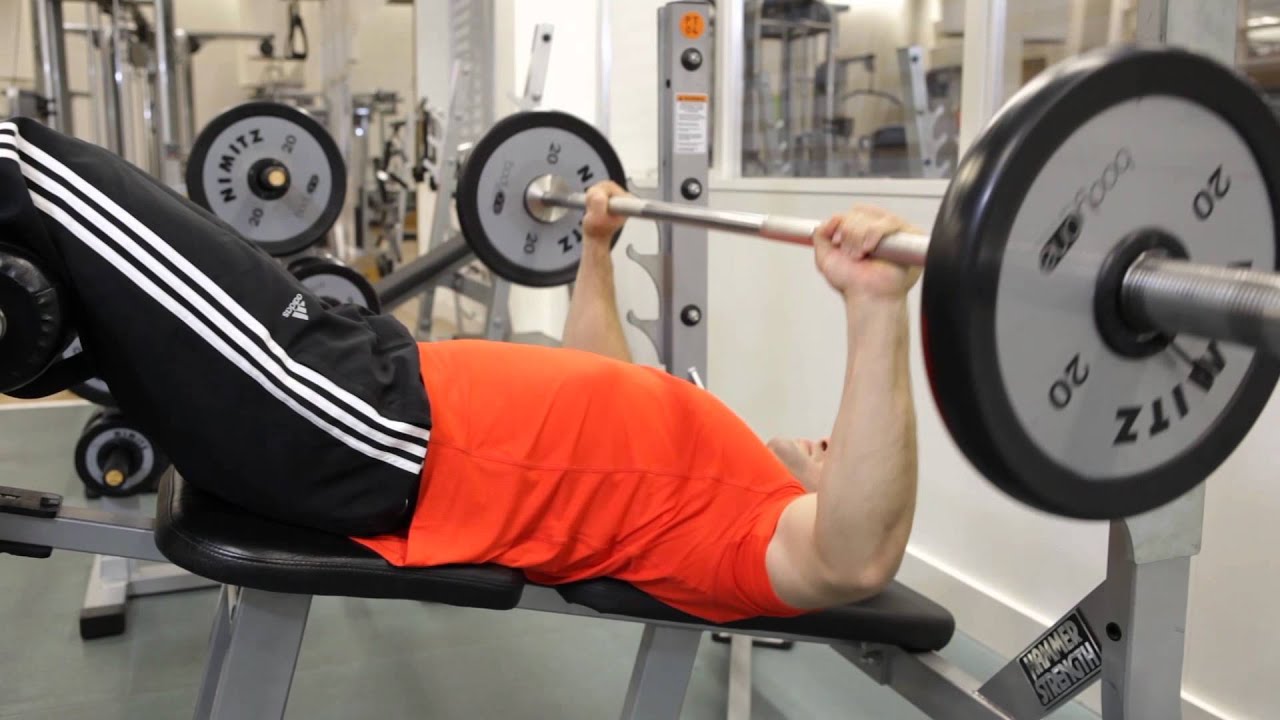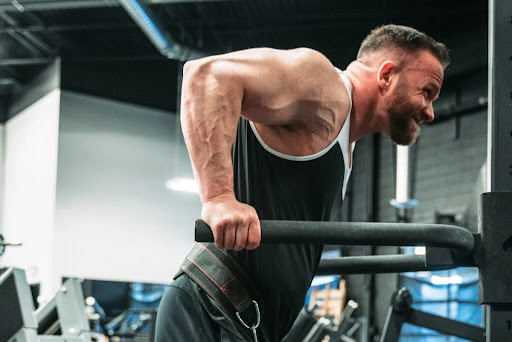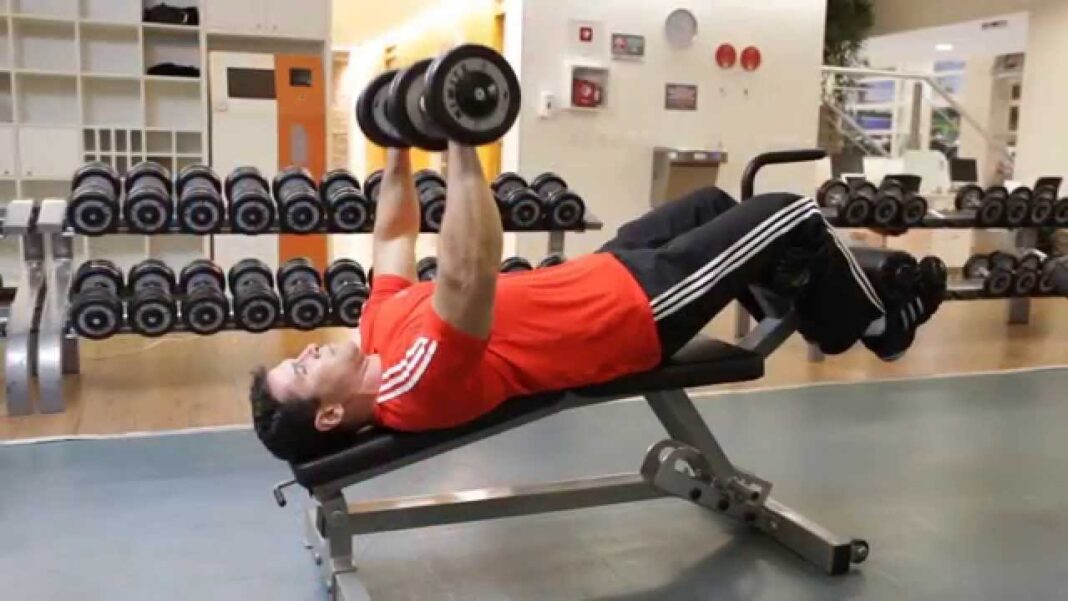Decline Barbell Bench Press: The King of Lower-Chest Mass & Power
When it comes to building a thick, powerful, and deeply carved lower chest, no exercise delivers quite like the Decline Barbell Bench Press.
While the flat bench gets all the mainstream attention, bodybuilders know that true chest completeness includes full development from top to bottom — and the decline bench is what builds that dramatic “armor plate” look on the lower pecs.
The Decline Barbell Bench Press reduces shoulder involvement, reduces stress on the rotator cuff, and shifts the brunt of the work straight into the costal and sternal fibers of the pectoralis major.
The angle allows you to press more weight, target the lower chest with laser-like precision, and create a fuller, meatier chest silhouette that heavy flat bench alone cannot provide.
Whether your goal is mass, strength, or aesthetics, the decline bench deserves a permanent spot in your chest-training arsenal.
Muscles Worked
Primary Muscle
- Pectoralis Major (Lower Region — Costal Fibers)
Secondary Muscles
- Triceps Brachii
- Anterior Deltoids (less than flat bench)
- Serratus Anterior
- Core (stabilizing)
The decline angle minimizes the shoulders’ role, allowing more pure chest recruitment compared to flat or incline pressing.
Why the Decline Barbell Bench Press Works
✔ 1. Heavy Load Potential
You can typically press 5–15% more on decline compared to flat bench.
More load = more mechanical tension = more muscle growth.
✔ 2. Lower Chest Emphasis
The decline angle aligns the pressing motion perfectly with the lower pec fibers, stimulating:
- Thickness
- Width
- Lower-chest line separation
✔ 3. Reduced Shoulder Stress
The angle:
- decreases front-delt involvement
- reduces pressure on the rotator cuff
- encourages a more stable shoulder position
This makes decline pressing ideal for lifters who struggle with shoulder discomfort on flat bench.
✔ 4. Better Triceps Overload
The decline path shifts resistance toward elbow extension, allowing heavy triceps involvement while still stressing the chest.
✔ 5. Complete Chest Development
Decline bench builds:
- the lower shelf of the chest
- the “pec drop” appearance
- outer pec thickness
- inner pec depth
This is the look bodybuilders want — a chest that’s full from top to bottom.
How to Set Up the Decline Barbell Bench Press
Equipment Needed
- Decline bench (fixed or adjustable)
- Barbell
- Power rack or bench station with adjustable hooks
- Spotter recommended
Bench Setup
- Adjust to a 15–30° decline (more decline doesn’t mean more chest).
- Secure your feet under the leg anchors.
- Position yourself so your eyes are directly under the bar.
Grip Width
- Slightly wider than shoulder width.
- Standard bodybuilding grip: 1.3–1.5× shoulder width.
- Too wide overstresses shoulders; too narrow shifts load to triceps.
Elbow Angle
- Elbows at approx. 45° from your torso.
- This maximizes chest activation and minimizes shoulder strain.
How to Perform the Decline Barbell Bench Press
- Unrack With Control
- Retract and depress your shoulder blades (“down and back”).
- Unrack the bar and lock it above your lower chest.
- Do NOT lose shoulder stability — keep everything tight.
- Lower the Bar to the Lower Chest
This is where the magic happens.
- Lower the bar to below the nipple line, toward the lower pecs.
- Keep elbows at about 45°.
- Descend slow and controlled.
- Touch the lower chest lightly — don’t bounce.
- Press Up With Chest Drive
- Drive the bar upward in a slight arc.
- Push through the chest, not the shoulders.
- Keep your scapula retracted the entire time.
- Lock out smoothly without hyperextending elbows.
- Control the Path
The bar should move:
- down and slightly forward on the descent
- up and slightly back toward the rack on the press
This natural arc keeps the load on your chest and protects the shoulders.
Decline Bench Form Cues
These bodybuilder-style cues make a huge difference:
✔ “Press with your chest, not your shoulders.”
✔ “Lower to the bottom of the pecs — not the mid chest.”
✔ “Elbows at 45 degrees — protect the shoulders.”
✔ “Keep the bar path natural — down and forward, up and back.”
✔ “Retract your shoulder blades and keep them pinned.”
✔ “Drive hard through the triceps at the top.”
Programming the Decline Barbell Bench Press
- For Hypertrophy (Primary Goal for Bodybuilders)
- Sets: 3–4
- Reps: 8–12
- Rest: 90–120 sec
- Tempo: Controlled eccentric (2–3 sec)
Hypertrophy is maximized by focusing on stretch + tension + moderate to heavy loads.
- For Strength (Press Power)
- Sets: 4–5
- Reps: 4–6
- Rest: 2–3 minutes
- Use progressive overload and micro-loading.
Decline bench strength often transfers to triceps-heavy compound lifts.
- As a Secondary Chest Press
When used after flat or incline pressing:
- Sets: 3
- Reps: 10–12
- Rest: 60–90 sec
This approach exhausts the lower pecs after heavier barbell or dumbbell presses.
- As a Lower-Chest Finisher
Perform light-to-moderate weight for high reps:
- 2–3 sets of 15–20 reps
- Focus on stretch, pump, and burn.
Variations
- Decline Dumbbell Bench Press
- Increased range of motion
- Better unilateral activation
- Greater stretch
- Reverse-Grip Decline Bench Press
Further reduces shoulder involvement and shifts tension to the upper-lower pec transition zone.
- Decline Smith Machine Press
- Perfect for controlled hypertrophy
- Constant tension
- Safer for high-intensity techniques like drop sets
- Close-Grip Decline Press
- Emphasizes triceps
- Useful for developing pressing lockout strength
Advanced Training Techniques
- Rest-Pause Sets
Great for pushing past plateaus.
- Perform 8–10 reps
- Rest 15 seconds
- Do 3–4 more reps
- Rest 15 seconds
- Final mini-set to near failure
- Drop Sets
Perfect for maximizing lower-chest pump.
- Hit failure at 8–12 reps
- Reduce load by 20–30%
- Continue to failure
- Optionally: reduce again and repeat
- Slow Eccentrics
Emphasize muscle tension:
- 4–5 second lowering phase
- Explosive press
- Superset With Chest Dips
This combination is legendary for lower-chest hypertrophy.
Superset Example:
- Decline Barbell Bench Press — 8–10 reps
- Chest Dips — 10–12 reps
Absolute destruction of the lower pecs.
Common Mistakes (and Fixes)
❌ 1. Lowering to the Mid Chest
This turns the decline bench into a weird hybrid press and removes the lower-pec emphasis.
Fix: Bar must come down to the lower pec line.
❌ 2. Elbows Flared Too Wide
Increases injury risk and reduces chest tension.
Fix: Keep elbows tucked at 45°.
❌ 3. Flat Back / Shoulders Loose
Causes shoulder pain and loss of power.
Fix: Scapula retracted and depressed at all times.
❌ 4. Bouncing the Bar
Dangerous and removes chest tension.
Fix: Light touch, controlled movement.
❌ 5. Grip Too Wide
Stresses shoulders more than necessary.
Fix: Keep grip slightly wider than shoulder width.
Mind–Muscle Connection Tips
- Think “push from the lower pecs.”
- Visualize your chest fibers shortening as the bar rises.
- Keep triceps tight but don’t let them dominate the lift.
- Maintain chest expansion (rib cage up).
- Don’t rush the reps — feel the stretch and contraction.
Sample Lower-Chest Workout Using Decline Barbell Bench
- Decline Barbell Bench Press — 4×6–10
- Chest Dips (Forward Lean) — 3×8–12
- Decline Dumbbell Press — 3×10–12
- High-to-Low Cable Fly — 3×12–15
- Push-Up (Feet Elevated) — 2×Failure
This routine builds incredible thickness, width, and detail in the lower chest.
Bodybuilder’s Insight
The Decline Barbell Bench Press has been a staple in the routines of bodybuilders seeking a full, aesthetic chest:
- Franco Columbu
- Arnold Schwarzenegger
- Lee Haney
- Ronnie Coleman
- Jay Cutler
All used the decline bench to add mass to the lower chest and balance out the physique aesthetically.
Modern lifters who skip decline bench are missing out on a major cornerstone of complete chest development.
Practical Takeaways
✔ Decline bench is the best compound for lower-chest mass.
✔ Allows heavier loads than flat or incline bench.
✔ Reduces shoulder strain and increases chest focus.
✔ Use for hypertrophy, strength, or lower-chest specialization.
✔ Ideal pairing with Chest Dips and high-to-low cable flyes.
✔ Keep elbows at 45° and lower to the lower chest line.
✔ Perfect staple for both beginner and advanced bodybuilders.






